Mark Davidson, Dungannon, Co Tyrone
Mark operates a lowland sheep flock outside Dungannon, Co Tyrone. Breeding has finished up for his flock, which lambs down in three groups to make best use of housing and family labour.
The first group consists of 95 ewes which are all second, third and fourth lambing animals. They are also the biggest and fittest ewes in the flock.
Originally, there were 110 ewes selected for this group back in September, but 15 did not hold and were slipped to the second breeding group.
Texel ewes ran with a Suffolk ram, Suffolk ewes ran with two Texel rams, and the remaining crossbred ewes ran with a Texel and a Belclare ram
Group one was turned out to the rams over 18 to 20 September for a three-week breeding cycle.
While the breeding period was short, Mark does not skimp on ram power, with five tups put to the 110 ewes.
Texel ewes ran with a Suffolk ram, Suffolk ewes ran with two Texel rams, and the remaining crossbred ewes ran with a Texel and a Belclare ram.
All being well, these ewes will stay at grass until one month prior to lambing, which should start around mid-February.
Ewes in the first group were scanned on 9 December and lamb percentage is 186% with 60 doubles, 11 triplets and 24 singles.
Main flock
The second lambing group is the largest, with 150 ewes bred to six rams. Again, all breeding ewes in this group are mature animals.
All Texel ewes were mated to either a Suffolk, Belclare and Meatlinc ram and Suffolk ewes ran with three Texel rams. The Meatlinc ram is a new addition to the flock this autumn.
Rams were turned out in mid-October and ran with ewes for two cycles.
As some ewes are running on winter grazing, there are still rams with the breeding groups, as gathering animals is not straightforward on these land blocks.
The rams will be removed when ewes are gathered for fluke drenching later this month or when moved home from winter grazing.
Ewe lambs
The final breeding group on-farm consists of 60 homebred ewe lambs. These animals are being mated to either a Charollais or a Charollais x Beltex hybrid sire.
Again, these animals are on winter grazing and rams will be removed at the next gathering for routine management.
Fluke
All ewes were fluke drenched before breeding started and are now due a second treatment. With sheep in various breeding groups between winter runs and the home farm, Mark is dosing in batches when he gets the opportunity.
Some ewes got a second fluke dose on Friday 10 December, with Mark hoping to get around all breeding groups before Christmas.
Some of the later lambing ewes and ewe lambs may possibly get a third dose, depending on how long they stay at grass in early spring and potential parasite risk.
Closing off grass
Any ewes not sent to winter grazing are on Mark’s silage swards, which are fields on the outlying areas of the farm.
He has 113ac of grass closed off around the main farmyard, with the aim to build covers for turning ewes out after lambing.
Kate Kingan and Peter Mant,
Tynan Abbey, Co Armagh
Kate and Peter run a lowland flock near Tynan, Co Armagh. The breeding season has also finished up for their flock, with the rams being removed last week, having been turned out on 1 November. All ewes were also fluke drenched last week.
This autumn has seen a major change to the sheep breeding programme at Tynan Abbey. Traditionally, Kate and Peter have split their 550 ewe flock in two lambing groups.
The main reason for the split lambing pattern came down to two factors – housing space and the availability of labour
The first group normally lambed indoors from mid-February to mid-March, while the second group started lambing in late March.
Within the second group, there are 120 Romney ewes which have successfully lambed outdoors in recent years.
The main reason for the split lambing pattern came down to two factors – housing space and the availability of labour.
Flock change
This year, the decision was taken to move all ewes into one breeding group and delay the start of lambing until 1 April.
Grass growth usually kicks off around early April on the farm. Delaying the start of lambing until 1 April means ewes and newborn lambs can be turned out to grass either straight away or within 24 hours, weather depending.
Cost saving
Not only will this be a huge time saver in terms of the workload, Kate and Peter say there will be considerable cost savings for their business.
During spring 2021, the early lambing flock remained housed until mid-April due to poor weather conditions and a lack of grass.
Therefore, this group needed extra concentrates, silage and straw for bedding, as well as tying up shed space needed for the second lambing group and increasing the daily workload.
With ewes lambing now in April and going straight to well-managed grass, concentrates and silage should not be required post-lambing.
Grazing
There are 125 ewe lambs in the flock which were bred to Ile de France and Dorset rams. These animals are on winter grazing at present along with 89 hoggets.
All mature ewes are grazing on the home farm. There are 50ac closed up in order to save grass for post-lambing time. More paddocks will be closed in due course.
According to Kate and Peter, one of the downsides of pushing lambing back to April is trying to stretch grass covers to provide enough grazing to carry ewes into March without eating into the swards needed post-lambing.
If necessary, some ewes can be housed to take the pressure off grazing ground in early spring and offered silage.
Silage has been tested and feed analysis is good at 69 D-Value, which will also help save on concentrate feeding in the run-up to lambing.
Scanning
The flock will be scanned for pregnancy at the end of January and feed plans will then be tailored to meet the nutritional demand of ewes pre-lambing.
Read more
€42m in beef payments top another positive week’s performance
Beef Management: high fertiliser prices – what should I do?
Mark Davidson, Dungannon, Co Tyrone
Mark operates a lowland sheep flock outside Dungannon, Co Tyrone. Breeding has finished up for his flock, which lambs down in three groups to make best use of housing and family labour.
The first group consists of 95 ewes which are all second, third and fourth lambing animals. They are also the biggest and fittest ewes in the flock.
Originally, there were 110 ewes selected for this group back in September, but 15 did not hold and were slipped to the second breeding group.
Texel ewes ran with a Suffolk ram, Suffolk ewes ran with two Texel rams, and the remaining crossbred ewes ran with a Texel and a Belclare ram
Group one was turned out to the rams over 18 to 20 September for a three-week breeding cycle.
While the breeding period was short, Mark does not skimp on ram power, with five tups put to the 110 ewes.
Texel ewes ran with a Suffolk ram, Suffolk ewes ran with two Texel rams, and the remaining crossbred ewes ran with a Texel and a Belclare ram.
All being well, these ewes will stay at grass until one month prior to lambing, which should start around mid-February.
Ewes in the first group were scanned on 9 December and lamb percentage is 186% with 60 doubles, 11 triplets and 24 singles.
Main flock
The second lambing group is the largest, with 150 ewes bred to six rams. Again, all breeding ewes in this group are mature animals.
All Texel ewes were mated to either a Suffolk, Belclare and Meatlinc ram and Suffolk ewes ran with three Texel rams. The Meatlinc ram is a new addition to the flock this autumn.
Rams were turned out in mid-October and ran with ewes for two cycles.
As some ewes are running on winter grazing, there are still rams with the breeding groups, as gathering animals is not straightforward on these land blocks.
The rams will be removed when ewes are gathered for fluke drenching later this month or when moved home from winter grazing.
Ewe lambs
The final breeding group on-farm consists of 60 homebred ewe lambs. These animals are being mated to either a Charollais or a Charollais x Beltex hybrid sire.
Again, these animals are on winter grazing and rams will be removed at the next gathering for routine management.
Fluke
All ewes were fluke drenched before breeding started and are now due a second treatment. With sheep in various breeding groups between winter runs and the home farm, Mark is dosing in batches when he gets the opportunity.
Some ewes got a second fluke dose on Friday 10 December, with Mark hoping to get around all breeding groups before Christmas.
Some of the later lambing ewes and ewe lambs may possibly get a third dose, depending on how long they stay at grass in early spring and potential parasite risk.
Closing off grass
Any ewes not sent to winter grazing are on Mark’s silage swards, which are fields on the outlying areas of the farm.
He has 113ac of grass closed off around the main farmyard, with the aim to build covers for turning ewes out after lambing.
Kate Kingan and Peter Mant,
Tynan Abbey, Co Armagh
Kate and Peter run a lowland flock near Tynan, Co Armagh. The breeding season has also finished up for their flock, with the rams being removed last week, having been turned out on 1 November. All ewes were also fluke drenched last week.
This autumn has seen a major change to the sheep breeding programme at Tynan Abbey. Traditionally, Kate and Peter have split their 550 ewe flock in two lambing groups.
The main reason for the split lambing pattern came down to two factors – housing space and the availability of labour
The first group normally lambed indoors from mid-February to mid-March, while the second group started lambing in late March.
Within the second group, there are 120 Romney ewes which have successfully lambed outdoors in recent years.
The main reason for the split lambing pattern came down to two factors – housing space and the availability of labour.
Flock change
This year, the decision was taken to move all ewes into one breeding group and delay the start of lambing until 1 April.
Grass growth usually kicks off around early April on the farm. Delaying the start of lambing until 1 April means ewes and newborn lambs can be turned out to grass either straight away or within 24 hours, weather depending.
Cost saving
Not only will this be a huge time saver in terms of the workload, Kate and Peter say there will be considerable cost savings for their business.
During spring 2021, the early lambing flock remained housed until mid-April due to poor weather conditions and a lack of grass.
Therefore, this group needed extra concentrates, silage and straw for bedding, as well as tying up shed space needed for the second lambing group and increasing the daily workload.
With ewes lambing now in April and going straight to well-managed grass, concentrates and silage should not be required post-lambing.
Grazing
There are 125 ewe lambs in the flock which were bred to Ile de France and Dorset rams. These animals are on winter grazing at present along with 89 hoggets.
All mature ewes are grazing on the home farm. There are 50ac closed up in order to save grass for post-lambing time. More paddocks will be closed in due course.
According to Kate and Peter, one of the downsides of pushing lambing back to April is trying to stretch grass covers to provide enough grazing to carry ewes into March without eating into the swards needed post-lambing.
If necessary, some ewes can be housed to take the pressure off grazing ground in early spring and offered silage.
Silage has been tested and feed analysis is good at 69 D-Value, which will also help save on concentrate feeding in the run-up to lambing.
Scanning
The flock will be scanned for pregnancy at the end of January and feed plans will then be tailored to meet the nutritional demand of ewes pre-lambing.
Read more
€42m in beef payments top another positive week’s performance
Beef Management: high fertiliser prices – what should I do?




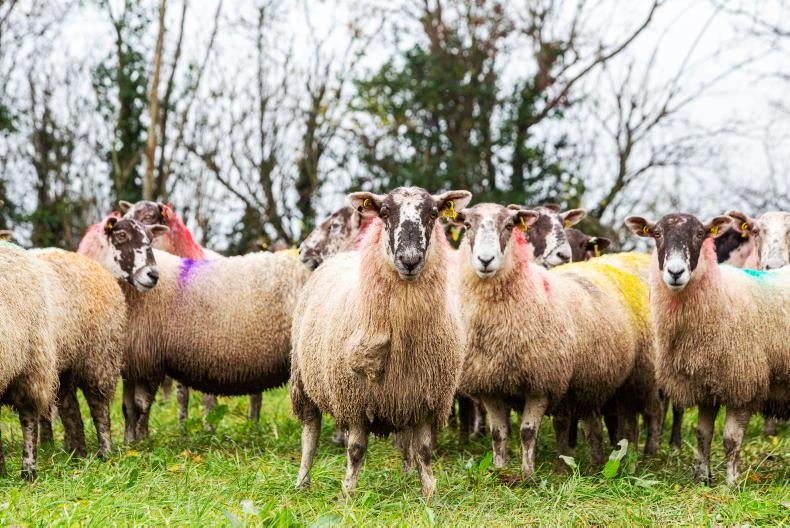
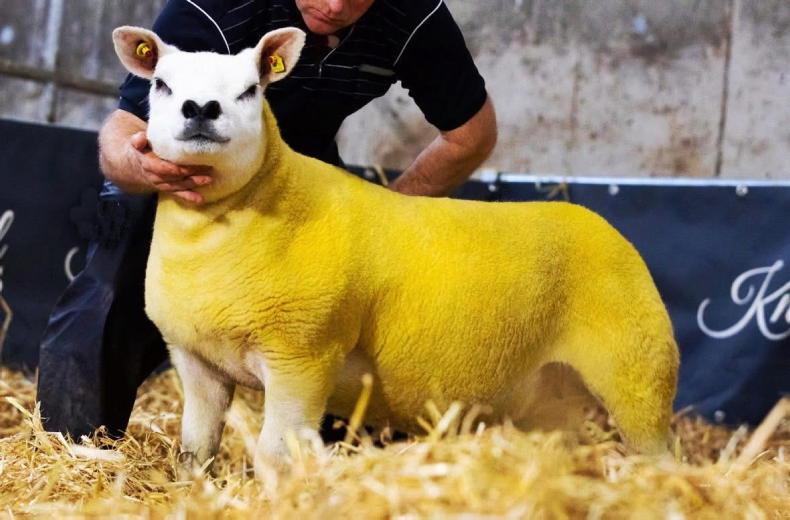
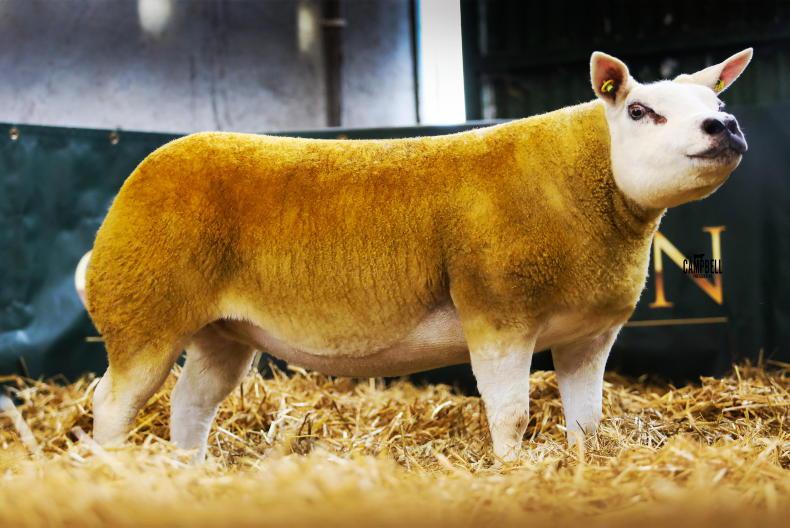
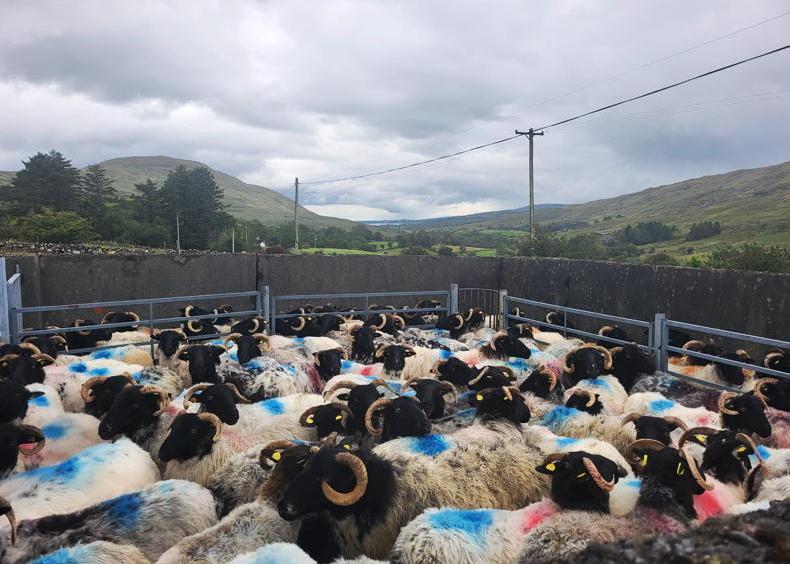
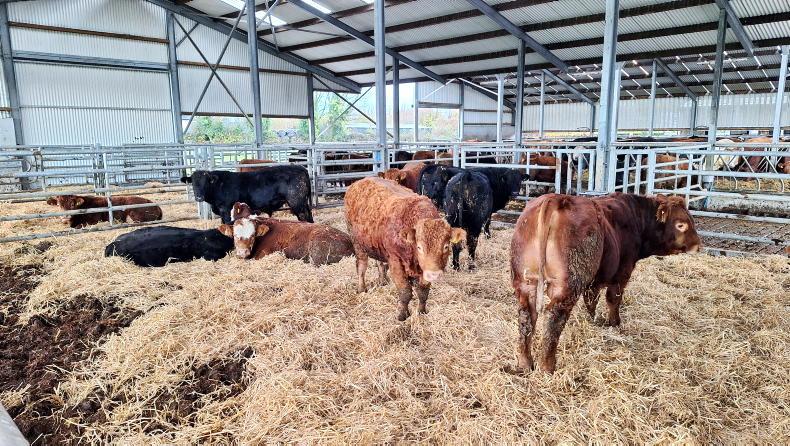
SHARING OPTIONS